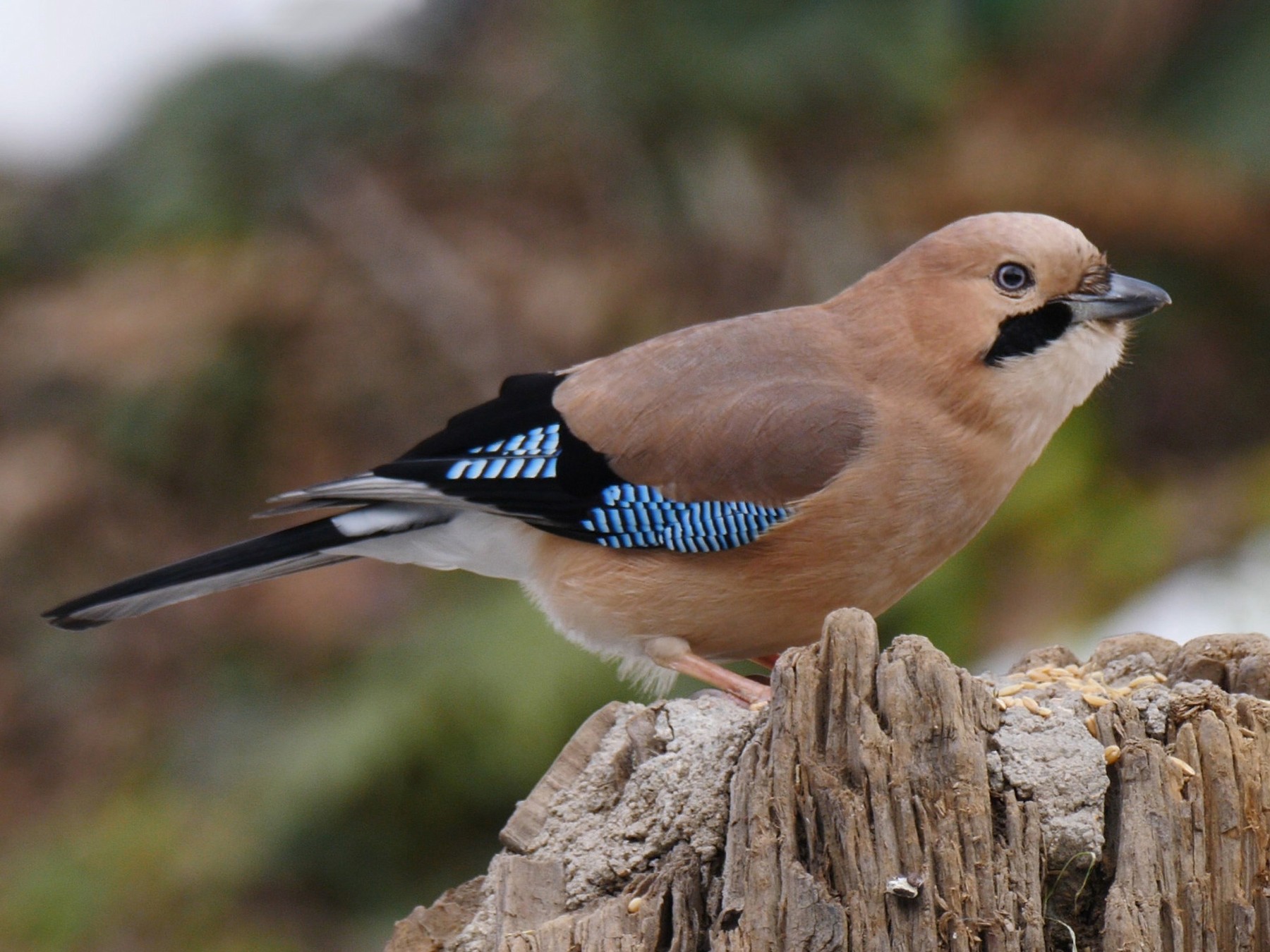Family: Corvidae
Genus: Garrulus
Residing in woodlands, forests, parklands, and gardens adorned with large trees, particularly oaks, this bird is easily recognized by its stout black bill, thick black mustache, and distinctive black-and-white wing pattern highlighted by a patch of blue on the shoulder. Its white rump is usually conspicuous in flight. Exhibiting significant variations across its extensive geographic range, it tends to be rather shy and elusive, making it challenging to observe closely. However, it occasionally forages in open areas and is often spotted flying across roads. With a diverse vocal repertoire, its typical call is a dry “scaaaaak,” accompanied by various warbling and hooting notes.
Photo: Look how gorgeous [myshortcode]
Description [myshortcode]

Distributed across a vast geographical range, the Eurasian jay is found in various habitats throughout Europe, Asia, and parts of North Africa. Its range extends from as far west as Ireland and Portugal to as far east as Siberia and Japan, and from as far north as Scandinavia to as far south as the Mediterranean region. This widespread distribution allows the Eurasian jay to inhabit diverse ecosystems including woodlands, forests, parks, and gardens. It typically thrives in wooded areas with scattered open clearings.
This adaptable bird species is known for its intelligence and resourcefulness, as well as its omnivorous diet. The Eurasian jay feeds on a wide variety of food items, including insects, small vertebrates, acorns, seeds, fruit, and even the eggs of other birds. Its ability to cache food for future consumption is a crucial survival strategy, especially during the winter months when food can be scarce.
In terms of behavior, Eurasian jays are known for their vocalizations, which consist of a wide range of calls and mimicry. Their rasping screech, known as the “”screech call,”” is a characteristic sound often associated with woodlands and forests where they are commonly found. Additionally, these birds are known to mimic the calls of other bird species, adding to their repertoire of vocalizations.
Breeding season for the Eurasian jay typically occurs from March to July, during which time nests are constructed in trees using a combination of twigs, roots, and moss. The female typically lays around 4-5 eggs, which are then incubated for approximately 16-20 days before hatching. Both parents play a role in feeding and caring for the young, with fledging occurring after about 18-21 days.
Overall, the Eurasian jay is a highly adaptive and resilient bird species with a widespread distribution across Europe and Asia. Its striking appearance, intelligence, and varied vocalizations make it a captivating and significant presence in the ecosystems it inhabits.
I hope this information is useful for you! If you need further details or have any other questions, feel free to ask.




